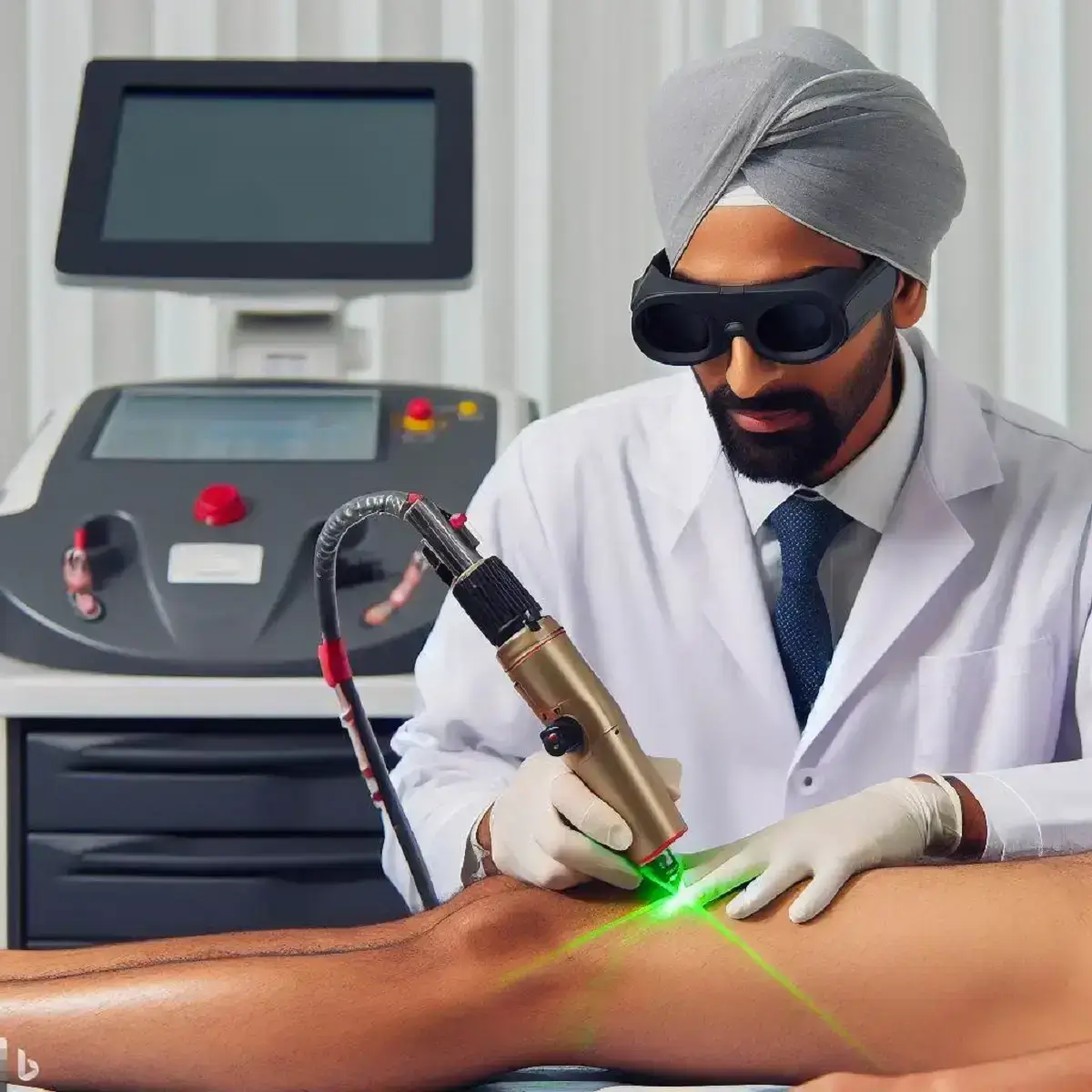Perhaps the most common dermatological complaint of people with darker skin tones is hyperpigmentation due to excess melanin production. Even the slightest injury, acne, insect bite, rash, scratching or burn in a person with dark skin often leads to long lasting post-inflammatory hyperpigmentation (PIH).
Even worse are major injuries that cause thick dark lines, scars and marks. In people of color, such marks take years to fade, and sometimes never go away completely. Some scars and stitch marks even turn into raised keloids or hypertrophic scars, especially in people of African American heritage. My own slightly raised and darker shade scar from a childhood chin injury is still visible decades later.
Dark skinned people also tend to suffer from hormone driven melasma and its associated dark patches in large areas of their face and forehead. Undereye dark circles are also more common in people of color, especially in people from South Asia.
Fairer skinned people tend to see less pigmented skin reactions and scarring due to the lack of significant melanin production by melanocytes. In darker skinned people, the melanocyte cells are easily triggered by the smallest of injuries.
It should be noted that some people with dark skin want to lighten their entire face or even whole body. Their first method of choice is usually via the use of skin lightening and bleaching creams. On this page, I focus on reducing small areas of skin darkening rather than overall skin bleaching. However, some of the ingredients and methods use to accomplish the latter are the same when it comes to targeting smaller areas of hyperpigmentation.
How to Treat Hyperpigmentation in Darker Skin
One of the most instructive videos on treating hyperpigmentation in dark skin is courtesy of Dr. Vanita Rattan. Make sure to also check out her bestselling book and her Instagram page.
Among her warnings include:
- To never ever use TCA chemical peels on skin of color.
- She does not like glycolic acid peels, since they can often cause inflammation and further skin darkening.
- Avoid lasers if possible. She is not a fan of using any form of light energy (other than Nd:YAG later per a later e-mail to me) on skin of color. She feels that most lasers can damage the lower dermal layer of the skin and cause burns. I think that some newer lasers might be more effective and safer, but I am glad that Dr. Rattan is not promoting them left and right.
- She says that hydroquinone gives fantastic results when you are on it due to its powerful tyrosinase inhibition. It just stops melanin from being formed. However, when you come off of it after three months, you get rebound hyperpigmentation that is often even worse then before as melanocyte cells rebound. Hydroquinone is just too aggressive in skin of color. I wish that someone had warned me as such before I damaged my skin by using a high-strength dose of this product.
Her favorite pigment reducing ingredients (which she uses in her own products too) include:
- Octadecanoic acid.
- Phytic acid.
- Ferulic acid.
- Vitamin A.
- Vitamin C.
- Licorice extract.
- Mulberry extract.
- Niacinamide.
- Azelaic acid.
- Antioxidants.
- Kojic acid dipalmitate (KAD — which she prefers to kojic acid, which can cause irritation in darker skin tones).
In another video, Dr. Rattan also praises tranexamic acid as a very good ingredient to reduce melasma and hyperpigmentation.
Another great video on treating hyperpigmentation is from Dr. Dray. However, her advice pertains to all skin tones and is not focused on people of color. In her opinion, the top 10 ingredients to fade hyperpigmentation are as follows:
- Topical Vitamin C.
- Hydroquinone.
- Kojic Acid.
- Soy.
- Azelaic Acid.
- Topical Vitamin A.
- Salicylic Acid.
- Licorice Root.
- Niacinamide.
- Sunscreen.
Hyperpigmentation Resources
Below I list some great resources in relation to treating hyperpigmentation and skin darkening in people of color. It is much harder to tackle hyperpigmentation in darker skin (Fitzpatrick 4-6) types. Some of the resources below often include testimonials, reviews and videos from people with much fairer skin, so please keep that in mind. Try to find results from people with a similar skin type to yourself to get the best idea of which products and treatments work. And which procedures causes side effects most frequently.
For example, liquid nitrogen cryotherapy on a lower leg scar on my skin type 4 caused significant skin darkening that remains even over five years later. Recently, one doctor on Instagram said that she no longer treats her darker skin patients with cryotherapy. Of course this does not mean that such a treatment will never work on your ethnic skin, but it is best to be cautious.
- Reddit’s r/SkincareAddiction has a great hyperpigmentation wiki. But do note that the page is not broken out by lighter versus darker skin types.
- The Bombay Skin Clinic has a very thorough page on pigmentation treatments.
- Dr. Seemal Desai wrote a good review on hyperpigmentation therapy options in 2014.
